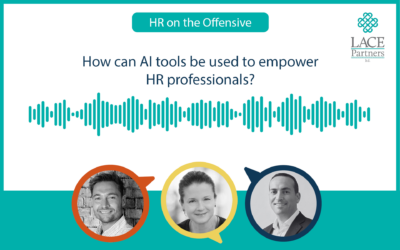In this week’s blog LACE co-founder Cathy Acratopulo speaks with Simon Smith, the CPO at Aston Martin, about employee listening strategy. Read on to learn what approaches are most effective and what role they play in optimising employee experience – or listen to their initial conversation here.
This piece is part of our EX Revolution campaign where we challenge HR teams to take a truly holistic approach to their employee experience.
What is organisational listening?
Organisational listening is the process of collecting feedback from employees to create a better workplace. This information can then be used to inform policy, process and improve working experiences within your organisation.
Many organisations have lost the art of human touch when it comes to the listening elements of HR; it has the tendency to be standardised. However, the symptoms of this – poor engagement, productivity and attrition – have led many people teams to rethink their approaches.
Annual engagement surveys are typically considered the base level in employee listening. They have their place in giving you year-on-year changes, particularly if you ask the same questions and can reflect on the responses.
However, they may not give you the level of detail that allows you to truly understand the answers you get. Instead, in order to report effectively, it’s important to invest in more detailed channels, such as focus groups or more frequent surveys to segments of your workforce.
How can you understand employee sentiment?
As the positive correlation between engaged employees and business outcomes becomes more widely understood, the interest in understanding employee sentiment has grown.
CEOs and board teams are challenging CPOs for insights, and Simon explains the importance of increasing the regularity of employee listening in both formal and informal settings. He also underlines the importance of segmenting your listening groups, such as setting up focus groups for new starters or older employees to get different perspectives.
This more personal approach, as opposed to relying entirely on surveys, can have a great impact on your organisational culture as well as providing more insightful results. Employees feel like they are really being listened to and partaking in a two-way conversation with their CPO.
The challenge, however, is that whilst it creates a more personal touch, it is more difficult to capture main themes because it generates an overwhelming number of opinions and feedback. Therefore, it is important to ask structured questions to result in structured answers.
Analysing people data
One of the key benefits to getting regular feedback is being able to use that to inform future decisions and make agile changes where needed.
That said, cultural change is not linear, and you only have control over certain parts. The key is to drop in small changes, listen to the results and make necessary adjustments in response to that.
It’s important to be transparent with your workforce and show them you are acting in response to their feedback, whilst also communicating a realistic timeline to avoid falling short of expectations.
What technology is out there to support employee listening?
At a time where the public eye is centred on technology and AI, it’s impossible to ignore the power of tools in enabling good listening channels, but it’s also important to get the balance right between the human and the machine.
Tools such as Mentimetre, Remesh and Slido provide a great way of engaging employees, gathering live feedback and sparking conversations with your teams. As AI’s presence increases within organisations, there will be more capability to track feedback in real-time. Some tech already has capability to track traffic to company platforms or analyse employees’ language around a particular subject, whether this is with a positive or negative sentiment, and to what scale.
This enables line managers to see this data weekly, in theory allowing them to understand the immediate impact of any change within the company. However, there is a significant ethical aspect here that must be considered, and employees need to trust that their organisation will use their data in the right way.
Additionally, HR teams and managers need to critically analyse this type of data, but wider feedback is imperative, as in isolation it may be misleading. This will require a shift in skillsets for many teams but is key to staying at the forefront of brilliant employee experience. The insights can then form a basis for ongoing conversation between employee and manager, as this is where the real value comes from.
The flipside to employee listening is employee monitoring, what are the dangers of this?
There are elements to employee listening – for example looking for sentiment in language use – where trust between organisation and employees is necessary. Your team needs to understand that you are gathering data for the right reasons.
The ICO released research recently where they surveyed 1000 employees, finding:
- 70% said that they found monitoring in the workplace intrusive
- 20% said they would be less likely to join a company if they felt that they were being monitored.
It is critical to sustain strong communication and transparency with employees as to why you are listening to them, what you will do with that information, and when. If this isn’t followed, employees could change their behaviour whilst being listened to, ending in false results and damage to your culture.
Ready to transform your employee experience? Reach out to us by filling out the form below. We’re excited to help you in your journey!






